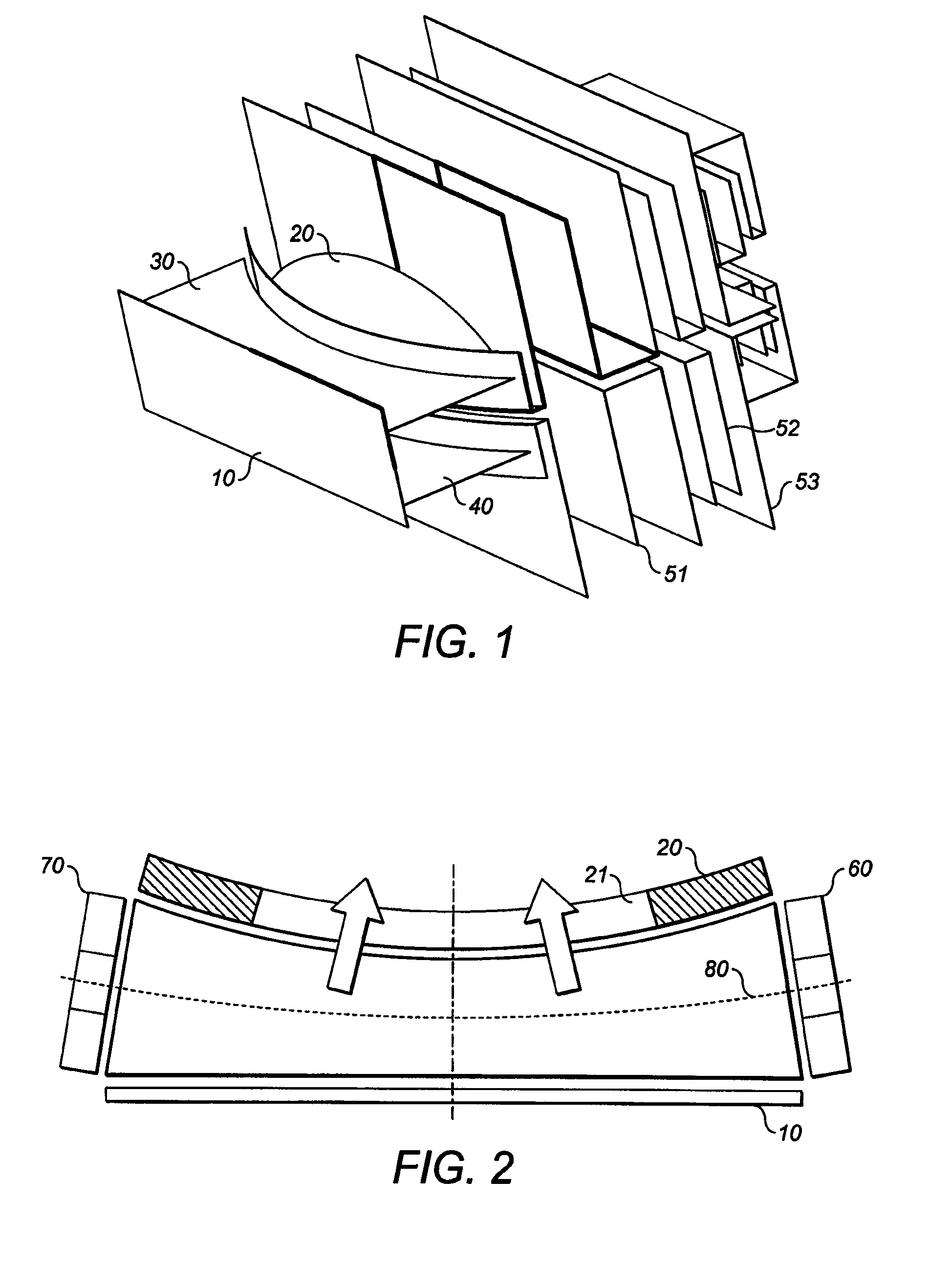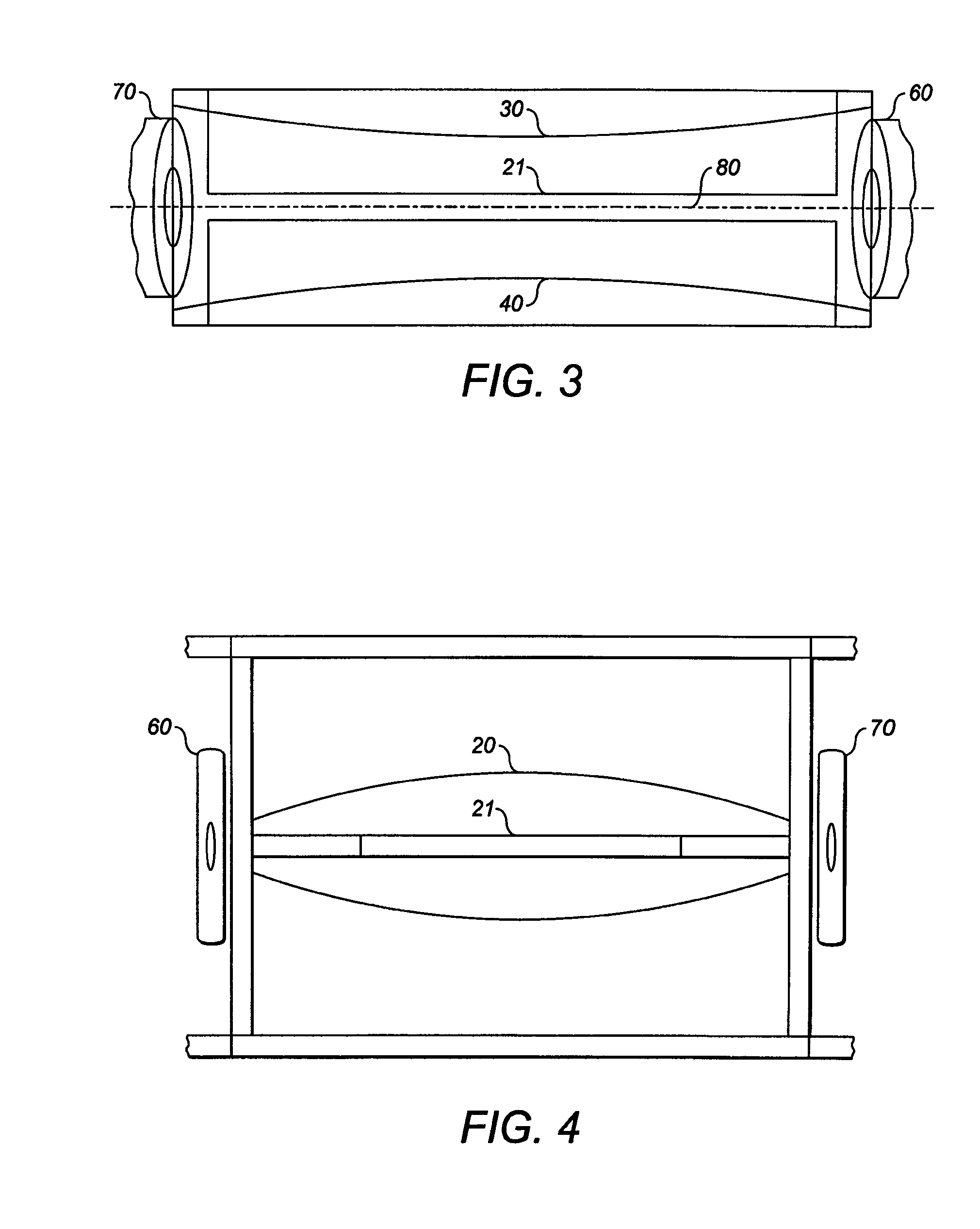Ion trap
a technology of ion traps and traps, applied in the field of ion traps, can solve the problems of increasing requirements, affecting the parameters of the resulting ion beam, and increasing the difficulty of subsequent focusing in this direction
- Summary
- Abstract
- Description
- Claims
- Application Information
AI Technical Summary
Benefits of technology
Problems solved by technology
Method used
Image
Examples
Embodiment Construction
[0030]An ion storage trap in accordance with a preferred embodiment of the present invention will now be described with reference to the Figures. In contrast with previous devices having parallel or concentric surfaces of trap electrodes, it has been found to be both possible and advantageous to have surfaces with different curvatures Some examples are shown in FIGS. 1, 2 and 3.
[0031]The trap is formed from substantially elongate electrodes (unlike the 3D quadrupole ion trap). These electrodes have a different spacing from each other at both ends of the trap than they do in the central region of the trap—the ends of the electrodes are splayed out at the ends, or constrict at the ends. The number of electrodes can be 3 or more. Preferably an even number of electrodes is used. A four-electrode device is specifically described here, with splayed ends. The splaying of the ends of the electrodes can be seen in the Figures, most clearly in FIGS. 2 and 3, where electrodes 10 and 20 diverge...
PUM
 Login to View More
Login to View More Abstract
Description
Claims
Application Information
 Login to View More
Login to View More - R&D
- Intellectual Property
- Life Sciences
- Materials
- Tech Scout
- Unparalleled Data Quality
- Higher Quality Content
- 60% Fewer Hallucinations
Browse by: Latest US Patents, China's latest patents, Technical Efficacy Thesaurus, Application Domain, Technology Topic, Popular Technical Reports.
© 2025 PatSnap. All rights reserved.Legal|Privacy policy|Modern Slavery Act Transparency Statement|Sitemap|About US| Contact US: help@patsnap.com



